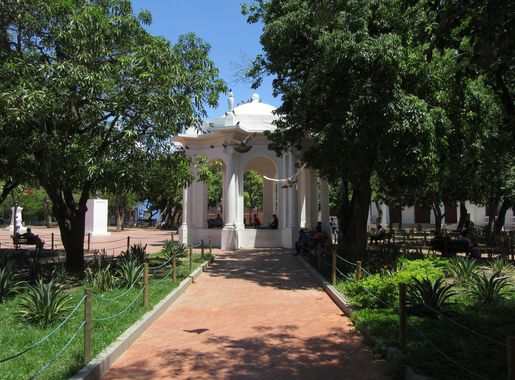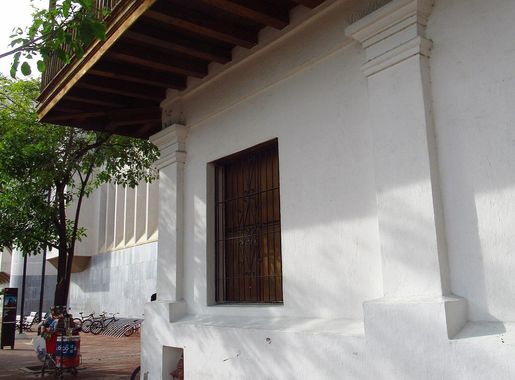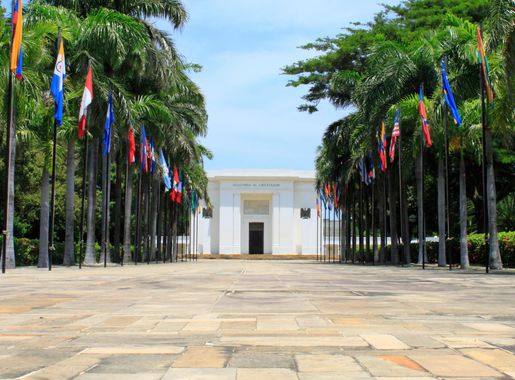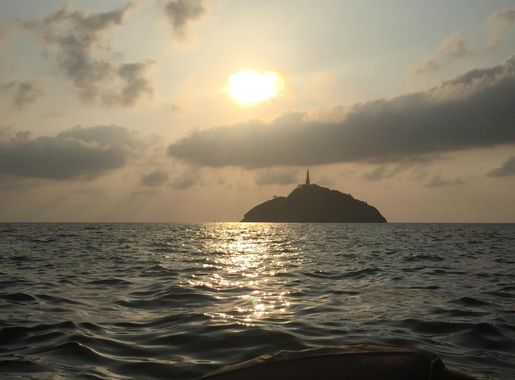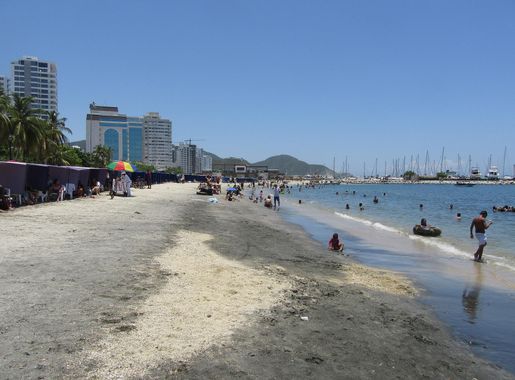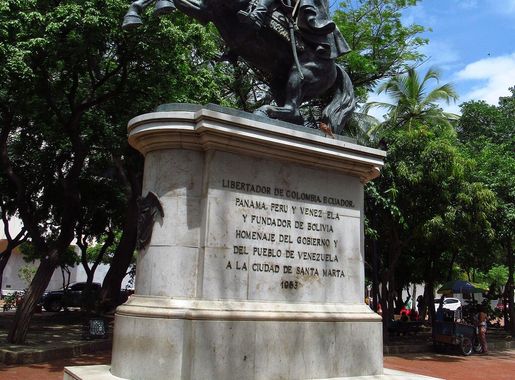
Discover the Timeless Charm of Santa Marta's Historic Center
Explore the historic charm and cultural richness of Santa Marta's Historic Center, where colonial heritage meets vibrant street life and Caribbean flavors.
Santa Marta's Historic Center is a delightful blend of colonial architecture, vibrant street life, and rich cultural heritage. As one of the oldest cities in South America, this neighborhood offers a unique glimpse into both the past and present of Colombia. Stroll through its narrow streets lined with colorful buildings, where every corner tells a story of the city's storied past. The heart of the Historic Center is the Plaza de Bolívar, a bustling square where locals and tourists alike gather to enjoy the lively atmosphere. Here, you can visit the iconic Catedral de Santa Marta, the oldest cathedral in Colombia, which stands as a testament to the city's colonial history. Don't miss the Museo del Oro, where you can marvel at the pre-Colombian artifacts and learn about the indigenous cultures that once thrived in the region. As you explore further, you'll find an array of charming cafes, boutique shops, and local eateries offering delicious Caribbean cuisine. The vibrant street art and murals add a modern touch to the historic surroundings, providing plenty of photo opportunities. In the evening, the Historic Center comes alive with music and dance, making it a perfect spot to experience the local nightlife and immerse yourself in the culture and traditions of Santa Marta.
Local tips in Historic Center
- Visit in the early morning or late afternoon to avoid the midday heat.
- Wear comfortable shoes as the streets are cobblestone.
- Try the local street food, especially the arepas and fresh fruit juices.
- Keep an eye on your belongings, as pickpocketing can occur in crowded areas.
- Take a guided walking tour to fully appreciate the history and stories of the neighborhood.
Discover the Timeless Charm of Santa Marta's Historic Center
Santa Marta's Historic Center is a delightful blend of colonial architecture, vibrant street life, and rich cultural heritage. As one of the oldest cities in South America, this neighborhood offers a unique glimpse into both the past and present of Colombia. Stroll through its narrow streets lined with colorful buildings, where every corner tells a story of the city's storied past. The heart of the Historic Center is the Plaza de Bolívar, a bustling square where locals and tourists alike gather to enjoy the lively atmosphere. Here, you can visit the iconic Catedral de Santa Marta, the oldest cathedral in Colombia, which stands as a testament to the city's colonial history. Don't miss the Museo del Oro, where you can marvel at the pre-Colombian artifacts and learn about the indigenous cultures that once thrived in the region. As you explore further, you'll find an array of charming cafes, boutique shops, and local eateries offering delicious Caribbean cuisine. The vibrant street art and murals add a modern touch to the historic surroundings, providing plenty of photo opportunities. In the evening, the Historic Center comes alive with music and dance, making it a perfect spot to experience the local nightlife and immerse yourself in the culture and traditions of Santa Marta.
Iconic landmarks you can’t miss
Parque de los Novios
Explore Santa Marta's Parque de los Novios, a vibrant park filled with lush gardens, lively atmosphere, and a taste of local culture.
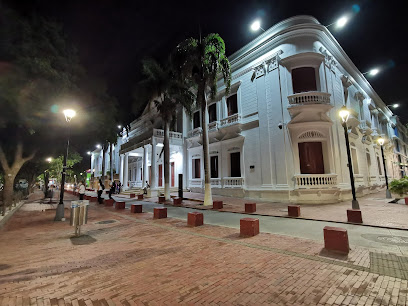
Quinta de San Pedro Alejandrino
Discover the enchanting Quinta de San Pedro Alejandrino, a historic estate in Santa Marta that beautifully combines art, history, and nature in one captivating location.
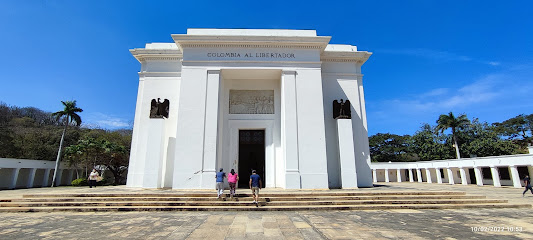
Parque Bolívar
Discover the beauty and tranquility of Parque Bolívar, a lush urban park in Santa Marta, where culture and nature come together for an unforgettable experience.
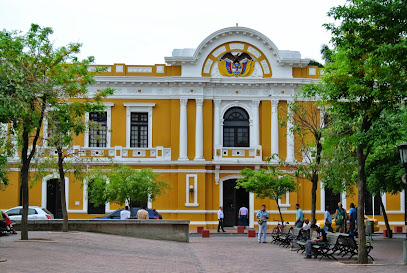
Museo del Oro Tairona - Casa de la Aduana
Unearth the treasures of pre-Columbian history at Museo del Oro Tairona in Santa Marta, a must-visit for culture and history enthusiasts.

Acuario Mundo Marino
Discover the magic of marine life at Acuario Mundo Marino, Colombia's premier aquarium, offering breathtaking exhibits and educational experiences for all ages.
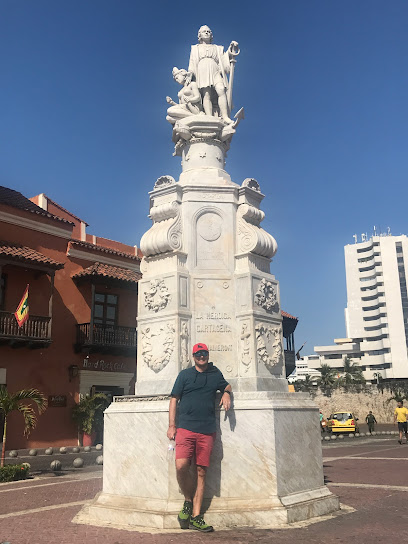
Catedral Basílica de Santa Marta
Discover the historic Catedral Basílica de Santa Marta, a stunning architectural marvel and spiritual haven in the heart of Santa Marta, Colombia.
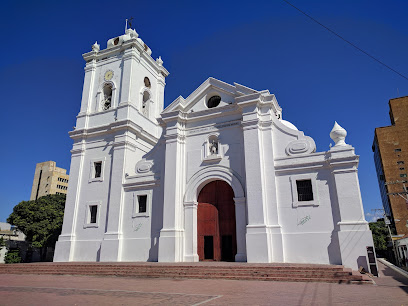
Parque Camellón Rodrigo de Bastidas
Explore the lush landscapes and vibrant flora at Parque Camellón Rodrigo de Bastidas, an urban oasis in Santa Marta, Colombia.
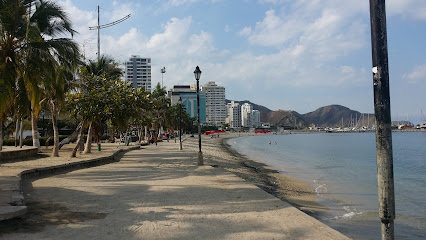
Masaya Santa Marta
Discover the vibrant heart of Santa Marta at Masaya Santa Marta, a cultural hostel offering comfort, community, and local experiences in Colombia.
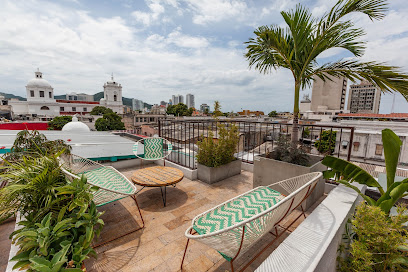
Malecón de Bastidas - Santa Marta
Experience the vibrant culture and natural beauty of Santa Marta at the stunning Malecón de Bastidas, a picturesque waterfront gem.

Bolivariano Museum of Contemporary Art
Discover the vibrant world of contemporary art at the Bolivariano Museum of Contemporary Art in Santa Marta, a perfect blend of culture and history.
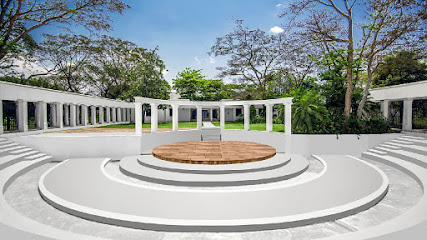
Centro Cultural San Juan
Discover the vibrant cultural heartbeat of Santa Marta at Centro Cultural San Juan, where art, history, and community beautifully intertwine.
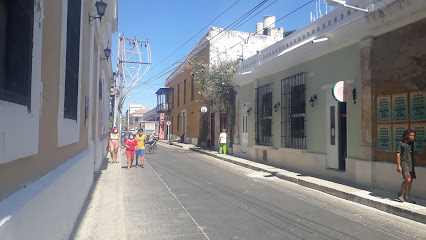
La Quinta De Bolívar
Explore La Quinta De Bolívar, a captivating museum in Santa Marta showcasing the life and legacy of Simón Bolívar, Colombia's liberator.
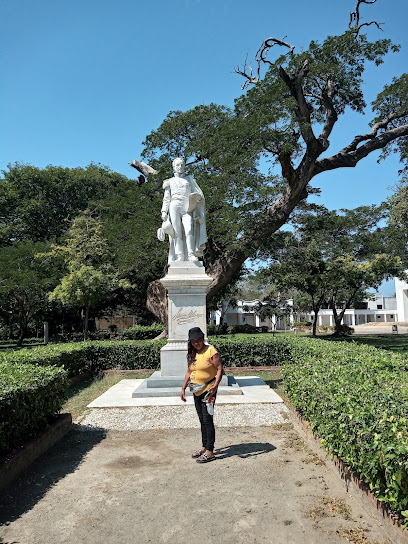
Altar of the Fatherland
Explore the Altar of the Fatherland in Santa Marta, a historical tribute to Colombia's heroes and a serene place for reflection amidst beautiful gardens.
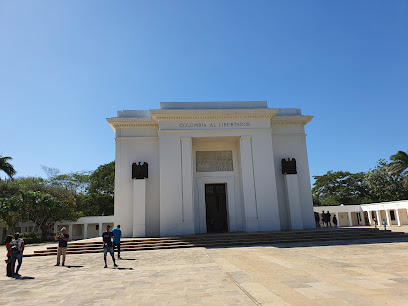
SANTA MARTA - COLOMBIA
Explore Santa Marta, Colombia: A vibrant coastal city with rich history, stunning beaches, and a captivating cultural scene.
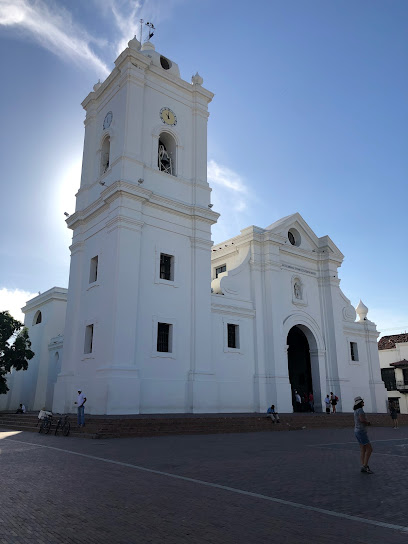
San Fernando’s Fort
Explore San Fernando’s Fort in Santa Marta for a captivating journey through Colombia's colonial history and breathtaking coastal views.
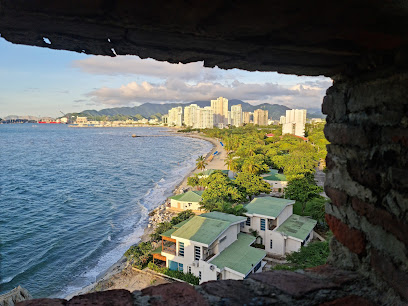
Unmissable attractions to see
Parque Bolívar
Experience the tranquil charm of Parque Bolívar, an urban oasis in Santa Marta, where nature and local culture beautifully intertwine.

Catedral Basílica de Santa Marta
Explore the enchanting Catedral Basílica de Santa Marta, a stunning 18th-century architectural marvel in the heart of Colombia's oldest city.
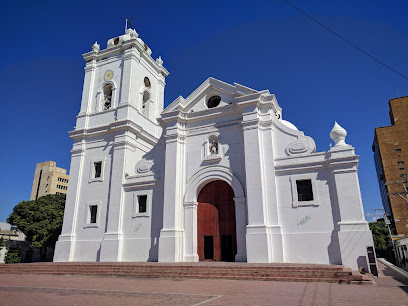
Parque Camellón Rodrigo de Bastidas
Explore the beauty of nature at Parque Camellón Rodrigo de Bastidas, a tranquil state park in Santa Marta, Colombia, perfect for relaxation and cultural experiences.
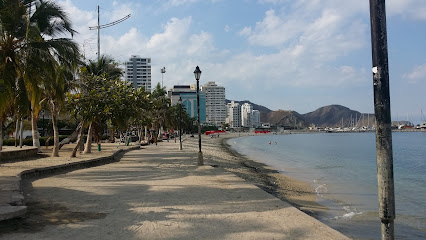
Malecón de Bastidas - Santa Marta
Discover the beauty of the Malecón de Bastidas in Santa Marta, where the Caribbean coast meets vibrant culture and local flavors.
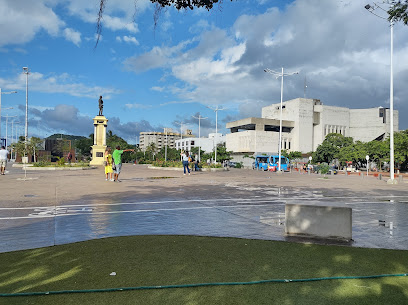
Bolivariano Museum of Contemporary Art
Explore the Bolivariano Museum of Contemporary Art in Santa Marta, a vibrant hub of history and contemporary creativity showcasing Colombian artistic expressions.
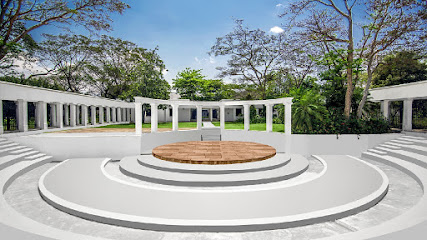
Centro Cultural San Juan
Discover the rich cultural heritage of Santa Marta at Centro Cultural San Juan, a vibrant center for art, history, and local traditions.
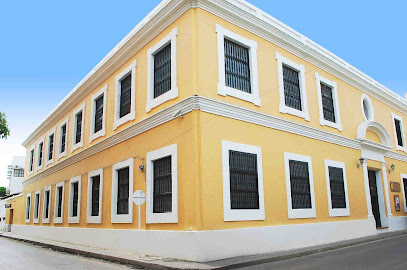
Casa de Madame Augustine
Explore the historical elegance of Casa de Madame Augustine, a heritage building and archaeological museum in the heart of Santa Marta.
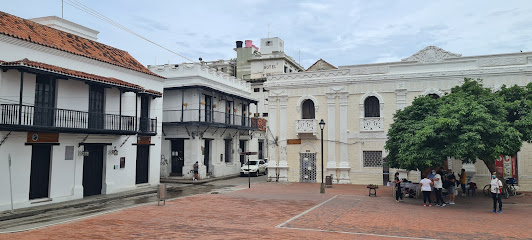
Essential places to dine
Ouzo Santa Marta
Discover Ouzo Santa Marta - where Mediterranean flavors meet vibrant nightlife in the heart of Colombia's beautiful coastal city.
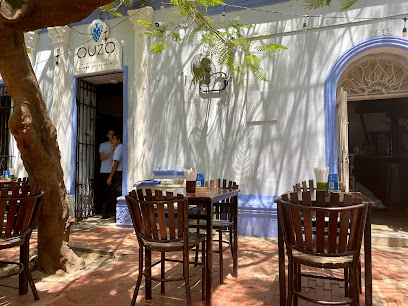
Lulo Café Bar
Discover the vibrant flavors of Colombia at Lulo Café Bar, where delicious grilled dishes meet a lively atmosphere in Santa Marta.
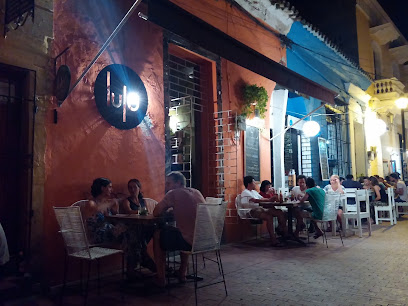
Donde Chucho Gourmet
Discover exquisite Colombian cuisine at Donde Chucho Gourmet in Santa Marta—where every meal is a celebration of local flavors and culinary artistry.
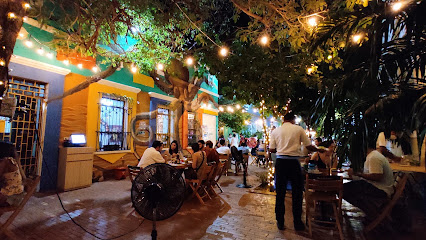
La Muzzería
Experience the vibrant flavors of Colombia at La Muzzería in Santa Marta - where tradition meets innovation in every dish.
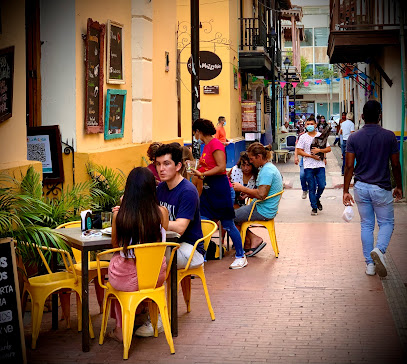
Restaurante LamArt
Experience exquisite dining at Restaurante LamArt in Santa Marta, where local flavors meet international cuisine in a warm and inviting atmosphere.

La Casona Restaurante Pizzeria
Experience the best of Italian cuisine and fresh seafood at La Casona Restaurante Pizzeria in Santa Marta's historic center.
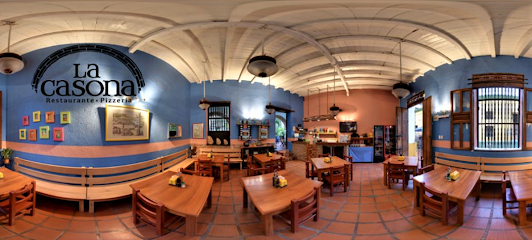
Andrés Santa Marta
Discover the vibrant flavors of Colombia at Andrés Santa Marta - where culinary tradition meets modern flair in an unforgettable dining experience.
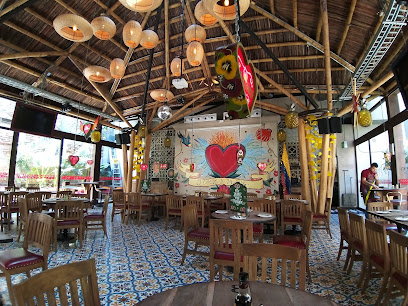
Restaurante y bar La Perla
Discover delicious grilled delights at Restaurante y Bar La Perla in Santa Marta's historic center – a perfect spot for food enthusiasts!
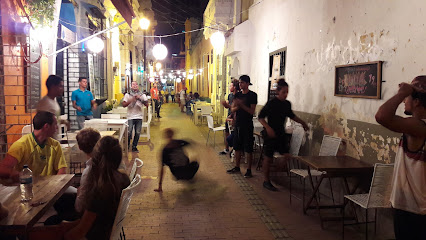
Basilea Comida Francesa y Mediterranea
Experience exquisite French and Mediterranean cuisine at Basilea Comida Francesa y Mediterranea in Santa Marta - where flavor meets elegance.
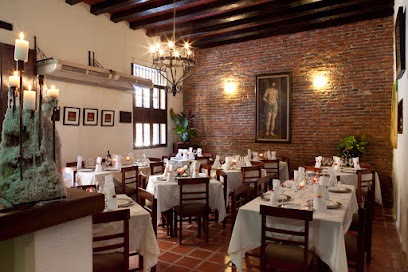
Santa Mesa
Experience authentic Colombian flavors at Santa Mesa – where every bite tells a story amidst vibrant cultural scenery.
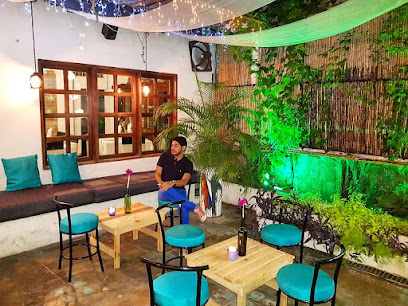
Markets, malls and hidden boutiques
Centro Comercial Buenavista
Discover shopping, dining, and entertainment at Centro Comercial Buenavista in Santa Marta, a vibrant shopping mall that offers a taste of local culture.
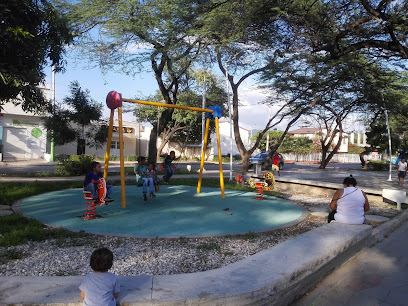
Centro Comercial Ocean Mall
Experience the vibrant shopping scene at Centro Comercial Ocean Mall in Santa Marta, where fashion meets flavor in a lively atmosphere.
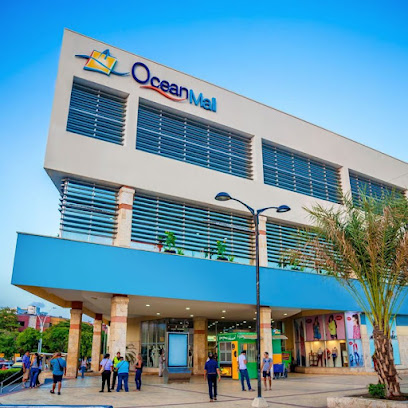
City Mall
Explore the dynamic City Mall in Santa Marta, a premier shopping destination with diverse stores, delicious dining, and exciting entertainment options.
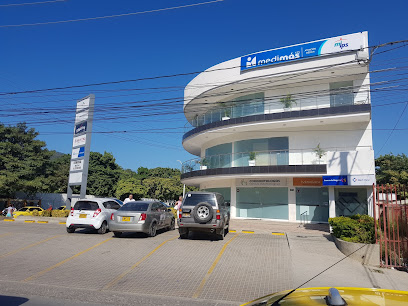
Rex Mall
Explore Rex Mall in Santa Marta for a delightful blend of shopping, dining, and entertainment in a vibrant atmosphere.
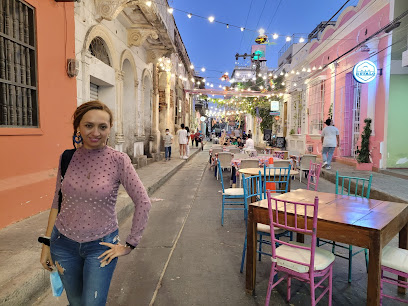
Centro artesanal cultural
Discover the heart of Colombian craftsmanship at Centro Artesanal Cultural in Santa Marta, where local artisans showcase their vibrant creations.
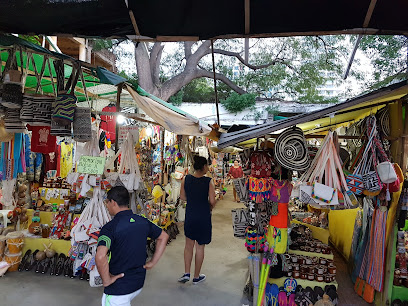
Artesanías Santa Martha
Discover the vibrant crafts of Santa Marta at Artesanías Santa Martha, where every piece tells a story of Colombian artistry and culture.
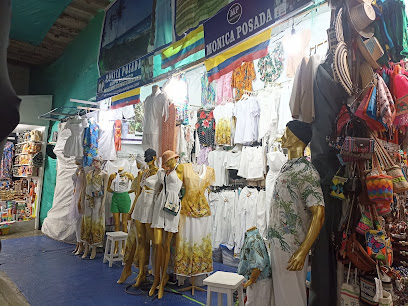
Santa Marca Diseño y Souvenirs
Explore unique handmade crafts and authentic Colombian souvenirs at Santa Marca Diseño y Souvenirs in the heart of Santa Marta.
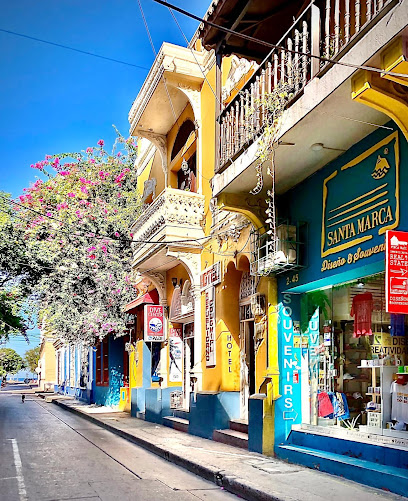
Casa Quinta Artesanal
Explore Casa Quinta Artesanal in Santa Marta, where vibrant Colombian culture meets exquisite handcrafted treasures.
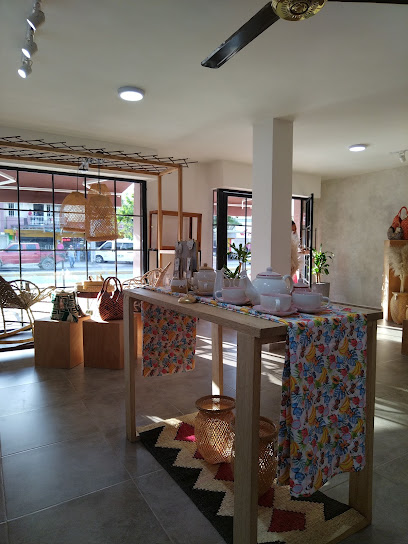
Artesanías & Más
Discover the essence of Santa Marta at Artesanías & Más, your go-to destination for unique handicrafts and local souvenirs.
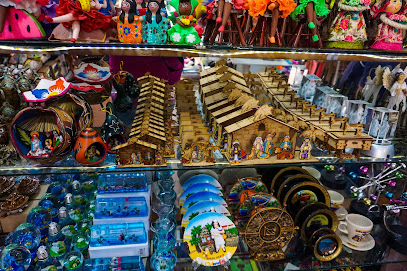
EL MANICOMIO DE LA CATEDRAL DESDE 5000
Explore the vibrant El Manicomio de la Catedral in Santa Marta for unique home goods and local artisan treasures that capture the spirit of Colombia.
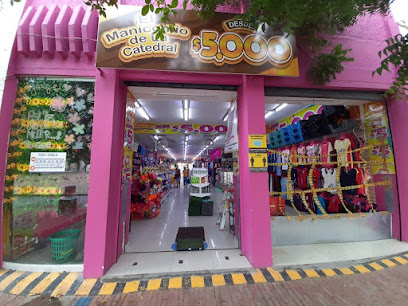
Essential bars & hidden hideouts
La Puerta
Experience the vibrant nightlife of Santa Marta at La Puerta, where lively music and refreshing drinks create unforgettable memories.
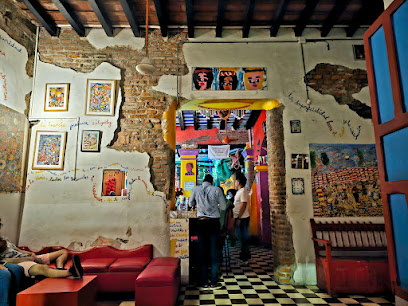
Crab's Bar
Discover the electrifying atmosphere of Crab's Bar in Santa Marta, where live rock music and vibrant nightlife come together for an unforgettable experience.
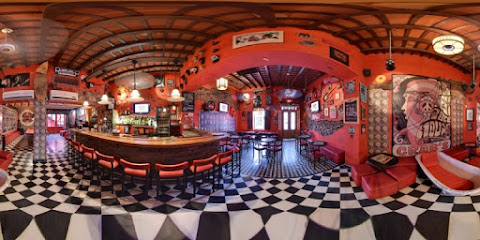
La Azotea Disco Bar Santa Marta
Experience the vibrant nightlife of Santa Marta at La Azotea Disco Bar, where cocktails, music, and dancing await you.
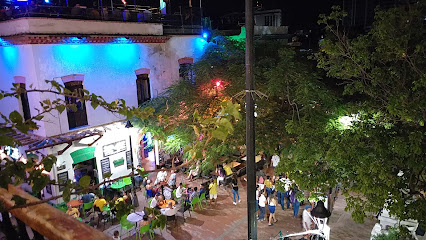
El Mono ROjo
Dive into the vibrant nightlife of Santa Marta at El Mono Rojo – the ultimate bar and disco club experience, perfect for dance enthusiasts and cocktail lovers.

Charlie's Bar
Experience the vibrant nightlife of Santa Marta at Charlie's Bar, where delicious cocktails and a lively atmosphere await.
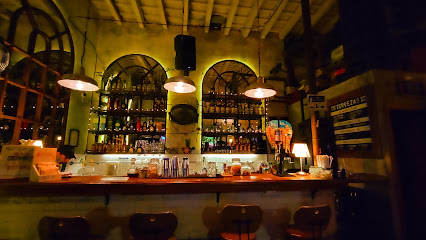
La Luna Rock Bar
Experience the vibrant nightlife of Santa Marta at La Luna Rock Bar, where music and fun come together in a lively atmosphere.
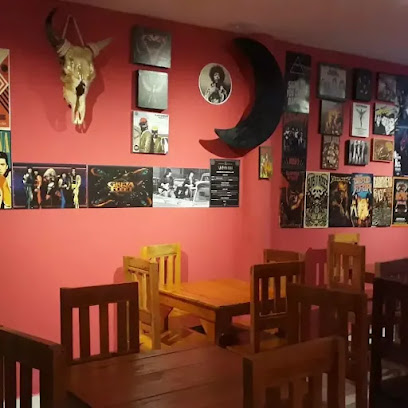
Gairaca Lounge- Discobar
Experience the vibrant nightlife of Santa Marta at Gairaca Lounge, where great music and unique cocktails create unforgettable moments.
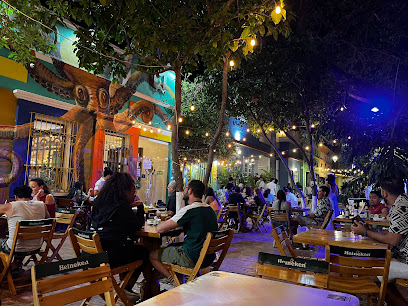
CASH AND COCO BAR AND GRILL
Experience the vibrant flavors and lively atmosphere at CASH AND COCO BAR AND GRILL in Santa Marta, where delicious food meets refreshing drinks.
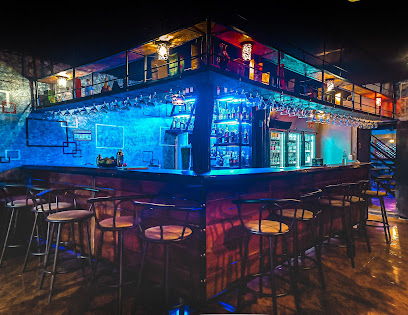
Beto
Experience the vibrant nightlife of Santa Marta at Beto, a charming bar located in the heart of San Francisco's bustling Centro Comercial Plaza.
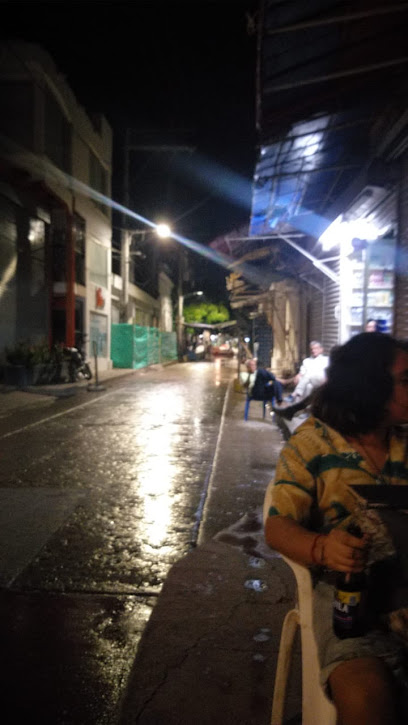
Old's Bar
Experience the vibrant nightlife of Santa Marta at Old's Bar, where refreshing drinks and lively entertainment await in a charming atmosphere.
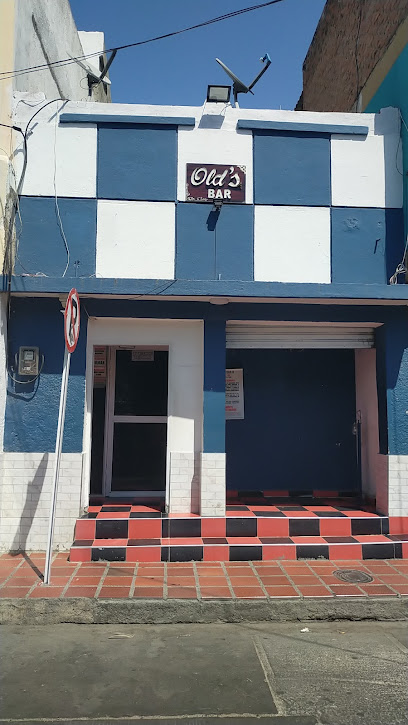
Local Phrases
-
- HelloHola
[oh-lah] - GoodbyeAdiós
[ah-dee-ohs] - YesSí
[see] - NoNo
[noh] - Please/You're welcomePor favor/De nada
[por fah-vor/de nah-dah] - Thank youGracias
[grah-see-ahs] - Excuse me/SorryPerdón/Lo siento
[pehr-dohn/loh see-ehn-toh] - How are you?¿Cómo estás?
[koh-moh ehs-tahs] - Fine. And you?Bien. ¿Y tú?
[byehn. ee too] - Do you speak English?¿Hablas inglés?
[ah-blahs een-glehs] - I don't understandNo entiendo
[noh ehn-tyehn-doh]
- HelloHola
-
- I'd like to see the menu, pleaseMe gustaría ver el menú, por favor
[meh goo-stah-ree-ah vehr ehl meh-noo, por fah-vor] - I don't eat meatNo como carne
[noh koh-moh kahr-neh] - Cheers!Salud!
[sah-lood] - I would like to pay, pleaseMe gustaría pagar, por favor
[meh goo-stah-ree-ah pah-gahr, por fah-vor]
- I'd like to see the menu, pleaseMe gustaría ver el menú, por favor
-
- Help!¡Ayuda!
[ah-yoo-dah] - Go away!¡Vete!
[veh-teh] - Call the Police!¡Llama a la policía!
[yah-mah ah lah poh-lee-see-ah] - Call a doctor!¡Llama a un doctor!
[yah-mah ah oon dohk-tohr] - I'm lostEstoy perdido
[ehs-toy pehr-dee-doh] - I'm illEstoy enfermo
[ehs-toy ehn-fehr-moh]
- Help!¡Ayuda!
-
- I'd like to buy...Quisiera comprar...
[kee-see-eh-rah kohm-prahr] - I'm just lookingSólo estoy mirando
[soh-loh ehs-toy mee-rahn-doh] - How much is it?¿Cuánto cuesta?
[kwan-toh kwehs-tah] - That's too expensiveEso es muy caro
[eh-soh ehs mwee kah-roh] - Can you lower the price?¿Puedes bajar el precio?
[pweh-dehs bah-har ehl pree-syoh]
- I'd like to buy...Quisiera comprar...
-
- What time is it?¿Qué hora es?
[keh oh-rah ehs] - It's one o'clockEs la una
[ehs lah oo-nah] - Half past (10)Las diez y media
[lahs dyehs ee meh-dee-ah] - MorningMañana
[mah-nyah-nah] - AfternoonTarde
[tahr-deh] - EveningNoche
[noh-cheh] - YesterdayAyer
[ah-yehr] - TodayHoy
[oy] - TomorrowMañana
[mah-nyah-nah] - 1Uno
[oo-noh] - 2Dos
[dohs] - 3Tres
[trehs] - 4Cuatro
[kwah-troh] - 5Cinco
[seen-koh] - 6Seis
[says] - 7Siete
[syeh-teh] - 8Ocho
[oh-choh] - 9Nueve
[nweh-veh] - 10Diez
[dyehs]
- What time is it?¿Qué hora es?
-
- Where's a/the...?¿Dónde está el/la...?
[dohn-deh ehs-tah ehl/lah] - What's the address?¿Cuál es la dirección?
[kwahl ehs lah dee-rehk-syohn] - Can you show me (on the map)?¿Puedes mostrarme (en el mapa)?
[pweh-dehs mohs-trar-meh (ehn ehl mah-pah)] - When's the next (bus)?¿Cuándo es el próximo (bus)?
[kwan-doh ehs ehl proh-ksy-moh (boos)] - A ticket (to ....)Un boleto (a ....)
[oon boh-leh-toh (ah ....)]
- Where's a/the...?¿Dónde está el/la...?
History of Historic Center
-
Santa Marta, founded in 1525 by Rodrigo de Bastidas, is recognized as the oldest surviving city in Colombia. The Historic Center reflects the early colonial architecture, with numerous buildings dating back to the Spanish conquest. This period marked the beginning of a tumultuous history characterized by indigenous resistance and the establishment of Spanish colonial rule.
-
In the early 19th century, the Historic Center became a focal point during the struggle for independence from Spanish rule. Notably, Simón Bolívar, the renowned liberator, passed through Santa Marta in 1820, and the city played a significant role in the broader independence movement across Latin America. This era left behind a legacy of revolutionary spirit, evident in the local monuments and historical narratives.
-
Throughout its history, Santa Marta has been a melting pot of cultures, blending indigenous, Spanish, African, and Caribbean influences. The Historic Center showcases this diversity through its vibrant markets, traditional music, and culinary delights. The local culture is a rich tapestry, with festivals celebrating everything from religious traditions to indigenous heritage.
-
In recent decades, the Historic Center has undergone significant revitalization efforts, aimed at promoting tourism while preserving its historical essence. Restoration projects have focused on key landmarks, such as the Cathedral of Santa Marta and the Palacio de Gobierno, allowing visitors to appreciate the city's colonial past alongside its contemporary developments. This revitalization has injected new life into the neighborhood, making it a popular destination for both locals and tourists.
-
The Historic Center is home to several important historical sites, including the Casa de la Aduana, which served as the first customs house in the region, and the Parque de los Novios, a central gathering place that reflects the city's social life. These sites serve as reminders of Santa Marta's rich history and its role as a vital port city in Colombia's development.
Historic Center Essentials
-
The Historic Center of Santa Marta is easily accessible from various neighborhoods. If you're coming from the Rodadero area, you can take a local bus or taxi, which takes approximately 10-15 minutes. From the airport, taxis are the most convenient option, and the journey typically takes around 20-30 minutes depending on traffic. If you're in the El Centro neighborhood, you can simply walk to the Historic Center, as it is only a few blocks away.
-
The Historic Center is best explored on foot due to its compact size and pedestrian-friendly streets. Bicycles can be rented from local shops, and there are bike lanes in some areas. Public transport options include local buses, but they are less frequent in the Historic Center. Taxis are readily available and reasonably priced for those who prefer not to walk.
-
While the Historic Center is generally safe for tourists during the day, it is advisable to avoid walking alone at night, especially in poorly lit areas. Areas such as Parque de los Novios and the waterfront are usually safe but remain vigilant. Petty crime, such as pickpocketing, can occur, particularly in crowded places. It’s best to keep personal belongings secure and maintain awareness of your surroundings.
-
In case of emergency, dial 123 for police assistance or 125 for medical emergencies in Colombia. The local hospital is Hospital Universitario Julio Méndez Barreneche, which is equipped to handle various medical situations. It is recommended to carry a copy of your identification and travel insurance details at all times. For minor injuries, local pharmacies are available throughout the Historic Center.
-
Fashion: Do wear light, breathable clothing suitable for the warm climate. Avoid overly revealing outfits, especially when visiting religious sites. Religion: Do respect local customs and dress modestly when visiting churches. Public Transport: Do be polite and offer your seat to elderly passengers. Don’t eat or drink on local buses. Greetings: Do greet locals with a friendly 'Hola' and a smile. Eating & Drinking: Do try local seafood and fresh juices. Don’t drink tap water; always opt for bottled water.
-
To experience the Historic Center like a local, visit the Mercado Público to sample fresh fruits and local dishes. Engage with street vendors for a taste of local snacks. For a unique perspective, take a guided walking tour to learn about the area’s rich history. Don’t miss the sunset at the waterfront, where locals gather to socialize and enjoy the view. Additionally, be sure to explore the side streets, which often feature vibrant street art and hidden cafes.
Trending Landmarks in Historic Center
-
Parque de los Novios
-
Quinta de San Pedro Alejandrino
-
Parque Bolívar
-
Museo del Oro Tairona - Casa de la Aduana
-
Acuario Mundo Marino
-
Catedral Basílica de Santa Marta
-
Parque Camellón Rodrigo de Bastidas
-
Masaya Santa Marta
-
Malecón de Bastidas - Santa Marta
-
Bolivariano Museum of Contemporary Art
-
Centro Cultural San Juan
-
La Quinta De Bolívar
-
Altar of the Fatherland
-
SANTA MARTA - COLOMBIA
-
San Fernando’s Fort
Nearby Cities to Historic Center
-
Things To Do in Barranquilla
-
Things To Do in Riohacha
-
Things To Do in Cartagena
-
Things To Do in Sincelejo
-
Things To Do in Cúcuta
-
Things To Do in Oranjestad
-
Things To Do in Palm Beach
-
Things To Do in Sero Blanco
-
Things To Do in Tanki Leendert
-
Things To Do in Noord
-
Things To Do in Paradera
-
Things To Do in Pos Chiquito
-
Things To Do in Savaneta
-
Things To Do in Santa Cruz
-
Things To Do in San Nicolas

